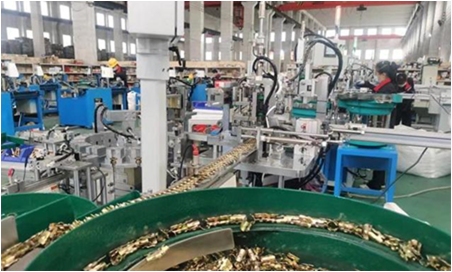Pro . 25, 2024 07:36 Back to list
Various Types of Metal Clamps and Their Applications in Different Industries
Types of Metal Clamps A Comprehensive Overview
Metal clamps are essential tools widely used across various industries and applications. They serve the purpose of holding, securing, or fastening items together, making them an indispensable part of construction, plumbing, automotive, and even DIY projects. Understanding the different types of metal clamps available can help optimize their use according to specific needs. In this article, we will explore some of the most common types of metal clamps and their applications.
1. C-Clamps
C-clamps, named for their C-shaped frame, are among the most versatile types of metal clamps. They are typically used to secure wood or metal pieces together during woodworking or metalworking projects. The screw mechanism allows for strong clamping force, making them ideal for tasks that require significant pressure. C-clamps come in various sizes to accommodate different thicknesses of materials.
2. Pipe Clamps
Pipe clamps are specifically designed to hold pipes securely in place, making them essential in plumbing and construction. These clamps are usually adjustable, allowing them to fit various pipe diameters. They can be utilized in both vertical and horizontal installations and are often made from durable materials like steel or aluminum to endure heavy loads and stresses.
3
. Hose ClampsHose clamps are commonly used in automotive and plumbing applications to secure hoses onto fittings or pipes. They come in numerous designs, including worm gear, spring, and constant tension clamps. Worm gear clamps, characterized by their adjustable band tightened via a screw mechanism, are prevalent due to their reliability. Spring clamps provide another solution, automatically adjusting as needed, ideal for applications with fluctuating hose sizes.
4. Toggle Clamps
types of metal clamps

Toggle clamps are mechanical devices that provide a strong clamping force while allowing for quick release. They are typically used in jigs, fixtures, and assembly operations. These clamps operate by pivoting around a hinge, which allows for easy access without compromising the security of the workpiece. Toggle clamps can be found in various designs, such as vertical, horizontal, and push-pull, catering to a wide range of applications.
5. F-Clamps
F-clamps resemble C-clamps but provide a broader clamping capacity due to their design. The bar allows for longer reach and is beneficial when working with larger wood pieces or assemblies. F-clamps can exert significant pressure, making them ideal for woodworking projects, especially during glue ups. They are available in various lengths and throat depths, ensuring versatility for different tasks.
6. Band Clamps
Band clamps are flexible and adjustable, often used to hold irregularly shaped objects together, such as furniture or wooden frames. The band is wrapped around the item being clamped and tightened using a screw mechanism. This type of clamp is particularly useful in woodworking applications where standard clamps may not fit the shape or configuration of the workpiece.
7. Spring Clamps
Spring clamps, also known as pinch clamps, utilize a spring mechanism to provide a quick and easy clamping solution. They are lightweight and portable, making them ideal for light-duty applications. These clamps are commonly used in situations where temporary holding is needed, such as in crafting and artwork projects.
Conclusion
Metal clamps come in a wide variety of types, each designed for specific applications and needs. From the robust C-clamps to the flexible band clamps, these tools play a crucial role in ensuring secure connections across various projects. By choosing the appropriate type of clamp for your needs, you can enhance both the efficiency and safety of your work. Whether you're a seasoned professional or a DIY enthusiast, understanding the different types of metal clamps will equip you with the knowledge to tackle any project effectively.


